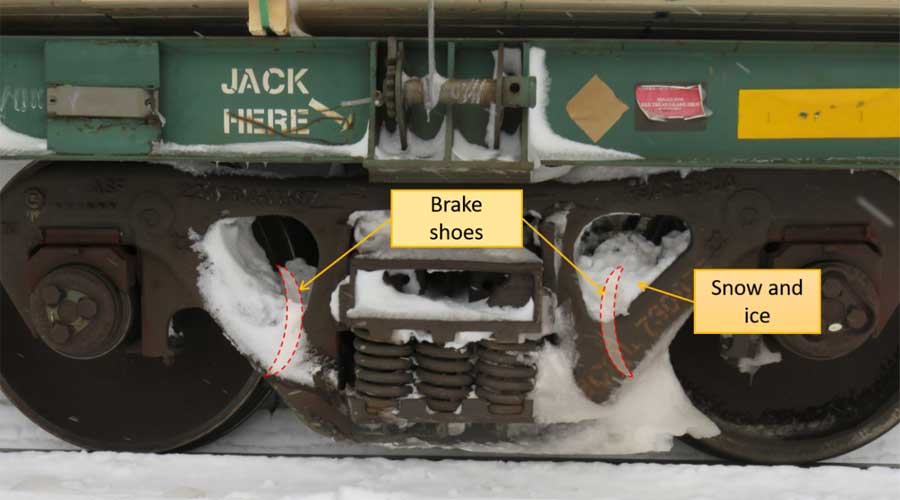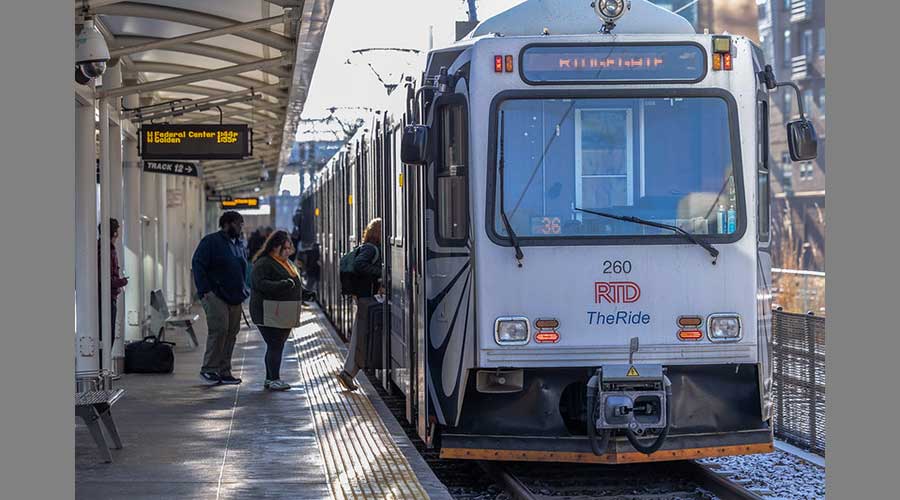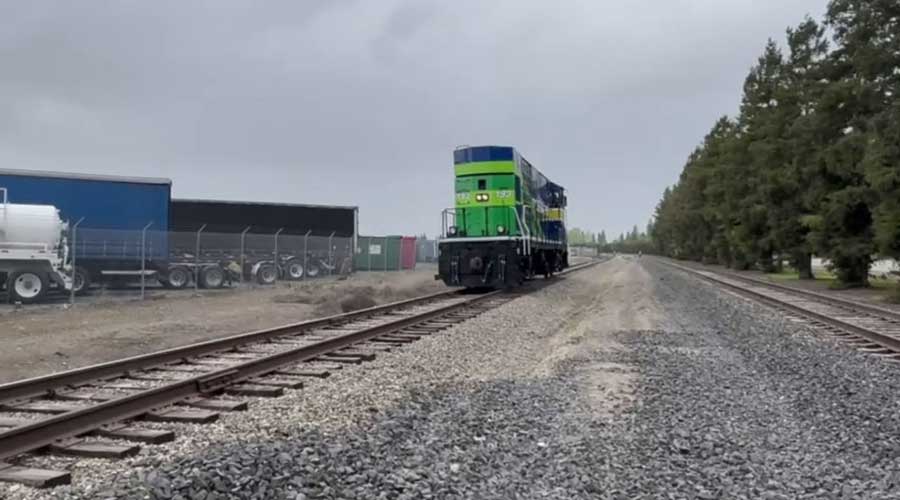Stay updated on news, articles and information for the rail industry
2/1/2021
Rail News: Safety
TSB: Train securement practices led to fatal incident at CN yard

The Transportation Safety Board (TSB) of Canada last week determined that failure to properly apply train securement practices led to a fatal accident involving uncontrolled train movement at the CN Edmundston Yard in New Brunswick in December 2018.
The incident occurred when a cut of two cars ran uncontrolled westward on the west lead track. The leading car struck a trailing locomotive traveling in the opposite direction. The conductor trainee, who was standing on the footboard of the locomotive, was trapped between the locomotive and the leading car and was fatally injured, TSB officials said in a press release.
The two cars had been left temporarily on the west lead track with only the emergency brakes applied, as the crew considered them to be "attended" as per Rule 112 of the Canadian Rail Operating Rules (CROR). If the cars had been considered "unattended," the employees would have been required to secure them by applying hand brakes to both cars, and conducting a brake effectiveness test.
TSB's investigation found that the CROR Rule 112, railway company instructions and employee training do not clearly define the factors and risks that employees must consider to determine whether they are in close enough proximity to take effective action to stop the equipment should it move unintentionally, agency officials said.
Investigators also found that the brake effectiveness of the two cars had been reduced due to ice contamination during previous moves inside the yard and, consequently, the total retarding force generated by the brakes of the the two cars was insufficient to prevent the cut from rolling uncontrolled.
During winter operations, regularly applying brakes services conditions the brakes in order to prevent snow and ice from accumulating between the brake shoes and the wheels. If the brakes on rolling stock are not properly conditioned in winter, their effectiveness can be compromised, increasing the risk of uncontrolled movement, TSB officials said.
In March 2019, the TSB sent a Rail Safety Advisory on the securement of attended cars during yard switching operations to Transport Canada (TC), CN, Canadian Pacific and the Railway Association of Canada. In response, TC conducted its own investigation, indicated that the cars in this situation were unattended, and issued a letter of noncompliance to CN.
The full TSB report can be read here.
Contact Progressive Railroading editorial staff.


 2025 MOW Spending Report: Passenger-rail programs
2025 MOW Spending Report: Passenger-rail programs
 Gardner steps down as Amtrak CEO
Gardner steps down as Amtrak CEO
 Guest comment: Oliver Wyman’s David Hunt
Guest comment: Oliver Wyman’s David Hunt
 Women of Influence in Rail eBook
Women of Influence in Rail eBook
 railPrime
railPrime







